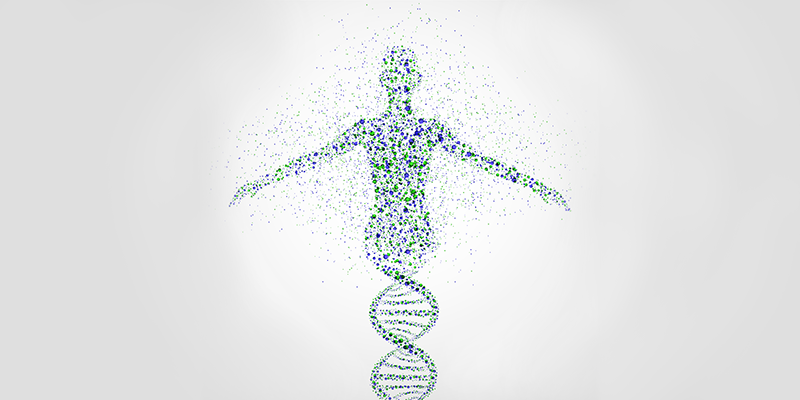Or in other words, bypass pathways.
Happy 2016 everyone! Here at PLab things have gotten off to a great start. You’ll keep hearing updates from other members of our team right here! In the meantime, I figured we’d kick off the new year with a broad scientific premise post.
Today’s post will focus on the theory of genetic bypass mechanisms for diseases. The search for causes of hereditary diseases both rare and common has focused on finding the invariant defective gene, mostly studied in a population of diseased individuals. In such cases, whole exome or whole genome sequencing efforts systematically across numerous patients with similar clinical and biochemical presentations has enabled the association of the disease to a specific gene mutation.
Although the patient pools associated with rare diseases are small, there exists the possibility that there are people among us, bearing the same disease mutation, but no clinical presentation of disease symptoms. These people are likely to possess a second or more than one mutation that confers protection against the disease causing gene’s functions!
Mindblowing, isn’t it?
We’re familiar with cluster gene diseases like Alzheimer’s, Parkinson’s disease, diabetes etc. While most people with the disease have one or more of the mutations associated with it, there are others who never develop the disease in spite of having a mutation associated with the disease. In such cases, we usually state that while having a disease mutation may predispose one to getting the disease, it is not diagnostic of the disease. Environment, among other factors, must play an important role. What if the ‘other factors’ referred to protective or balancing gene variants buried deep within our genomes?
It’s actually not all that uncommon.
Take the example of hypercholesterolemia. Mutations in genes encoding low-density lipoprotein receptor (LDLR) or its ligand, apolipoprotein B (APOB), are associated with severe hypercholesterolemia. The disease is characterized by high levels of LDL in circulation. Another gene associated with hypercholesterolemia is PCSK9. Overexpression of this gene leads to hypercholesterolemia in mice. Through a sequencing effort on 128 individuals with low circulating LDL levels, a 2005 Nature paper reported finding ‘loss of function’ or deleterious mutations in the gene PCSK9.
This finding suggests that there might be individuals in the general population who might be protected from developing hypercholesterolemia due to LDLR or APOB mutations if they also had ‘protective’ mutations in PCSK9. Indeed, in 2006, a NEJM paper showed just that.
Then there’s the case of diabetes. A 2014 paper showed that rare mutations in a gene called SLC30A8 reduce the risk of type 2 diabetes by nearly 65%. Further, these findings were observed in people across various ethnicities around the globe, suggesting that drugs targeting this gene could have worldwide utility.
Along the same lines, a study on nearly two thousand Icelandic people revealed that a point mutation, A673T, in the gene coding for amyloid precursor protein APP conferred protection against Alzheimer’s disease as well as age-related cognitive decline!
Similar protective mutations have been reported for narcolepsy and HIV.
Such findings lend credence to the thought that the solution or therapeutic targets for numerous diseases lies within our very genomes. But serendipitous discoveries apart, finding these is a lot like looking for a needle in the haystack. It requires a systematic analysis of sequence data across populations as well as knowledge of clinical and family histories of those enrolled in the study. While the cost of sequencing has certainly come down and continues to fall, it is difficult to subtract the data intensive component of such efforts, not to mention the logistical difficulties in organizing such trials.
A second, perhaps simpler approach to finding protective genes and thus, pathways that can serve as therapeutic targets is what we’re working on. By using whole animals that share common genetic traits for drug discovery screens, we are likely to come across molecules that tap into these serendipitous protective pathways to resolve disease pathologies. Historically, simple model organisms like yeast, worms and flies have been used to conduct genetic supressor/enhancer screens. Indeed, whole pathways have been elucidated by conducting such epistasis analyses.
These results have time and again been verified in higher model organisms and eventually in humans, indicating that there exist conserved bypass pathways across evolutionary taxa. Of course, this approach may not work for every disease- some human diseases are inherently complex and polygenic in nature. Such diseases may pose different challenges, yield more confounding data when modeled in simple organisms. But until the time systematic GWAS can be conducted across large swatches of populations for different diseases, at Perlstein Lab, we can continue to exploit the potential of simple model organisms to uncover protective bypass pathways.
Postscript: In a freak act of coincidence, as I finished writing this post, I happened to listen to the ‘This American Life’ podcast from January 15th 2016 (we love podcasts at Perlstein Lab, someday I will post our personal favorites). But, check it out – the story of Jill Viles and Priscilla Lopes-Schliep.
Jill and Priscilla share not one but two mutant genes, one of which is deleterious in Jill’s case and protective in Priscilla’s case. And the way this was discovered makes for one extremely fascinating story!
Here are two more links on the same topic:
Muscular dystrophy and surprise protective gene in golden retriever puppy
The Resilience Project


